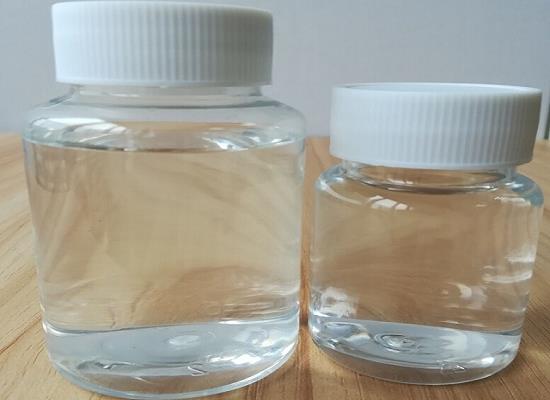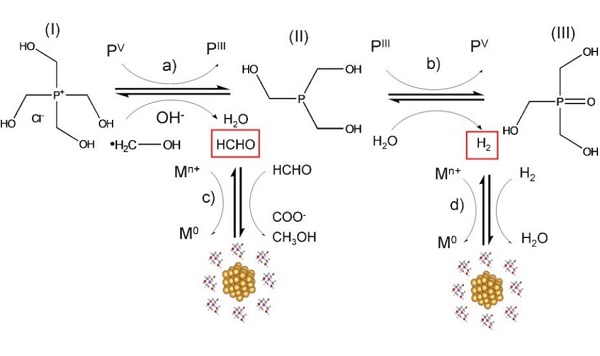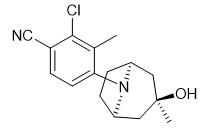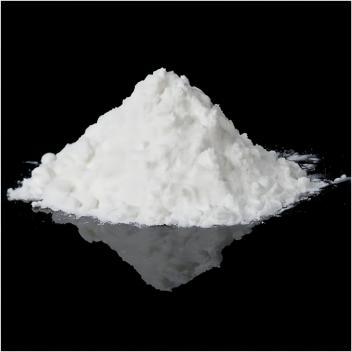Tetrakis(hydroxymethyl)phosphonium chloride: Synthesis and Application
General description
Tetrakis(hydroxymethyl)phosphonium chloride(THPC) is a clear pale pink or yellow-green liquid with a density of 1.341 g/mL at 25℃. It can be used in textile post-treatment, as a flame retardant for plastics and paper products, and in organic synthesis.
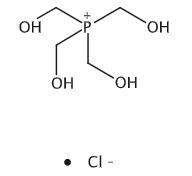
Fig. 1 The structure of Tetrakis(hydroxymethyl)phosphonium chloride.
Synthetic routes

Fig. 2 The synthetic method 1 of Tetrakis(hydroxymethyl)phosphonium chloride.
To a 50 mL flat-bottomed Schlenkwere added P4 (62.0 mg, 0.5 mmol), PhMe (25 mL), Bu3SnOMe (1.15 mL, 4.0 mmol), and PMHS (239 μL, 4.0 mmol). The resulting colorless, homogeneous solution was stirred under irradiation with blue LEDs (7X Osram OSLON SSL80, 455 nm (±15 nm), 20.3 V 1000mA) for 17 h, during which time the Schlenk tube was placed in a block cooled by circulating water to maintain near-ambient temperature. Volatiles were removed under vacuum and EtOH (25 mL) and paraformaldehyde (750 mg, 25 mmol) were added. The resulting colorless suspension was stirred at room temperature for 24 h. The reaction mixture was then frozen and HCI (4.0 M in 1,4-dioxane, 5 mL, 20 mmol) was added. After thawing, the reaction mixture was stirred at room temperature for a further 2 h. The resulting pale yellow suspension was filtered, and volatiles were then removed under vacuum. The resulting oily solid was triturated with pentane (20 mL) overnight, filtered, and washed with Et2O (20 mL). Drying the remaining solid under vacuum gave THPC (340 mg, 89%).

Fig. 3 The synthetic method 2 of Tetrakis(hydroxymethyl)phosphonium chloride.
To a 10 mL flat-bottomed Schlenk were added P4 (0.03 mmol, 232 μL of a stock solution in PhH), EtOH (0.5 mL), Bu3SnOMe (2.9 μL, 0.01 mmol), PMHS (28.7 μL, 0.48 mmol), and paraformaldehyde (30 mg, 1.0 mmol). The resulting colorless suspension was stirred under irradiation with near UV LEDs (365 nm) for 65 h, during which time the Schlenk tube was placed in a block cooled by circulating water to maintain near-ambient temperature. The mixture was frozen and HCI (4.0 M in 1,4-dioxane, 0.1 mL, 0.4 mmol) was added. After thawing, the mixture was stirred for 15 min, before Ph3PO (11.4 mg, 0.041 mmol) in MeCN (490 μι) was added, and the resulting mixture analyzed by quantitative, single scan, inverse-gated 31P(1H) NMR spectroscopy. Twosignificant resonances were observed at 32.2 ppm and 27.8 ppm, assigned to Ph3PO and THPC, respectively. Relative integration of these resonances provided the conversions of 62% to THPC, which corresponds to a turnover number of 11.2 (given the 6:1 stoichiometric ratio of the hydrostannylation reaction) [1].
Application
Reaction mechanism of THPC with collagen protein
To gain an understanding of the reaction mechanism of tetrakis hydroxymethyl phosphonium chloride (THPC) and collagen protein, we examined the interactions of THPC with polycaprolactam, polyvinyl alcohol and ethylenediamine, which were used as the substitutes for the amido, hydroxyl and amino groups of collagen protein. It was found that tetrakis hydroxymethyl phosphonium mainly linked with amino groups of collagen and to a lesser extent with hydroxyl groups and amido groups. The combination capacity of tetrakis hydroxymethyl phosphonium with hydroxyl groups and amido groups changed with pH and reached a peak at pH8.0 [2].
Reaction Investigation of Metal Salts with THPC and Chloride
The interaction of tetrakis(hydroxymethyl)phosphonium sulfate (THPS) and chloride (THPC) with water-soluble and water-insoluble metal compounds was investigated. We evaluated solutions of the phosphonium salts for dissolution of metal sulfides, and complexation of the THP moiety with Fe2+, Fe3+, Cu2+, Zn2+, Hg2+, and Pb2+. Scanning ultraviolet/visible spectroscopy was deployed to monitor complex formation. Applying mole ratios of 1-9 THP:1M (n+) (Fe3+, Hg2+, and Pb2+) revealed the formation of several complexes. THP did not appear to complex with Fe2+ and Zn+2 although isobestic points were maintained in the UV spectra. The results of this investigation did not confirm prior studies that showed complexation of Fe2+ with THP in the presence of ammonium ion. Results suggest that THPS and THPC dissolved metal sulfide precipitates at mildly acidic conditions, and THP often formed stable complexes of variable stoichiometry with the metal cations [3].
As biocides used in the disinfection of cooling towers
A sensitive in vitro assay for detecting DNA damage in RTG-2 cells culture is described. This assay employs a dye, PicoGreen double stranded DNA (dsDNA) quantitation reagent, which becomes intensely fluorescent upon binding nucleic acids. The assay includes a simple and rapid 50-min sample lysis in the presence of EDTA, SDS, and high urea concentration at pH 10, followed by time-dependent DNA denaturation at pH 11.6 after NaOH addition. The time course and the extent of DNA denaturation are followed in a microplate fluoresecence reader at room temperature for less than I h. Comparative studies between suspension and fixed RTG-2 cells indicated that it is possible to apply this methodology in both cases with good results. Neutral red assay was used for to determine the cellular viability when RTG-2 cultures were exposed to tetrakis(hydroxymethyl) phosphonium chloride (THPQ and benzalkonium chloride (BC), as biocides used in the disinfection of cooling towers. The results obtained by neutral red assay indicate IC50(49) values of 0.017 (0.011-0.028) and 2.71 (1.91-3.86) mg/L for tetrakis(hydroxymethyl) phosphonium chloride and benzalkonium chloride, respectively. DNA damage has been evaluated for both disinfectants in RTG-2 culture, by exposure to 1/10-, 1/25-, 1150, and 1/100-IC50(48) value, and the results obtained indicate a strain scission factor (SSF) of 0.126 +/- 0.014, 0.181 +/- 0.014, 0.217 +/- 0.013, and 0.245 +/- 0.013 in cell suspensions, and 0.077 +/- 0.019, 0.107 +/- 0.014, 0.151 +/- 0.014, and 0.202 +/- 0.015 in attached cells for tetrakis(hydroxymethyl) phosphonium chloride; while the SSF values for benzalkonium chloride are 0.023 +/- 0.009, 0.033 +/- 0.017, 0.068 +/- 0.012, and 0.088 +/- 0.015 in cell suspensions, and 0.033 +/- 0.010, 0.044 +/- 0.011, 0.080 +/- 0.009, and 0.093 +/- 0.010 in attached cells. Thus, the assay proposed in this study has made it possible to show DNA damage in RTG-2 cells when exposed to 0.2 (1/100 IC50(48)) and 300 (1/10 IC50(48)) Hg/L of tetrakis(hydroxymethyl) phosphonium chloride and benzalkonium chloride, respectively. The results obtained indicate that the Fast Micromethod Assay, applied on RTG-2 cell line cultures, is a fast and sensitive method for the early DNA damage detection in the aquatic environment [4].
Antioxidant
The newly manufactured N-isopropylacrylamide (NIPAM) polymer gel is composed of four components, i.e., gelatin, monomer (NIPAM), crosslinker (N,N'-methylenebisacrylamide, Bis), and antioxidant (tetrakis hydroxymethyl phosphonium chloride, THPC). In this study, we investigated the effects of gel composition on the dose response of NIPAM polymer gel. A statistical experiment to analyze the contribution of each composition to the linearity and sensitivity of );
You may like
Related articles And Qustion
See also
Lastest Price from Tetrakis(hydroxymethyl)phosphonium chloride manufacturers
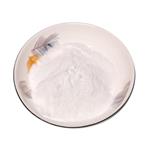
US $0.00-0.00/kg2023-12-11
- CAS:
- 124-64-1
- Min. Order:
- 1kg
- Purity:
- 0.99
- Supply Ability:
- 20tons
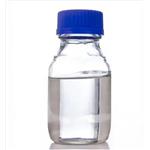
US $1300.00/kg2023-11-28
- CAS:
- 124-64-1
- Min. Order:
- 1400kg
- Purity:
- 80%
- Supply Ability:
- 1000Ton/month

